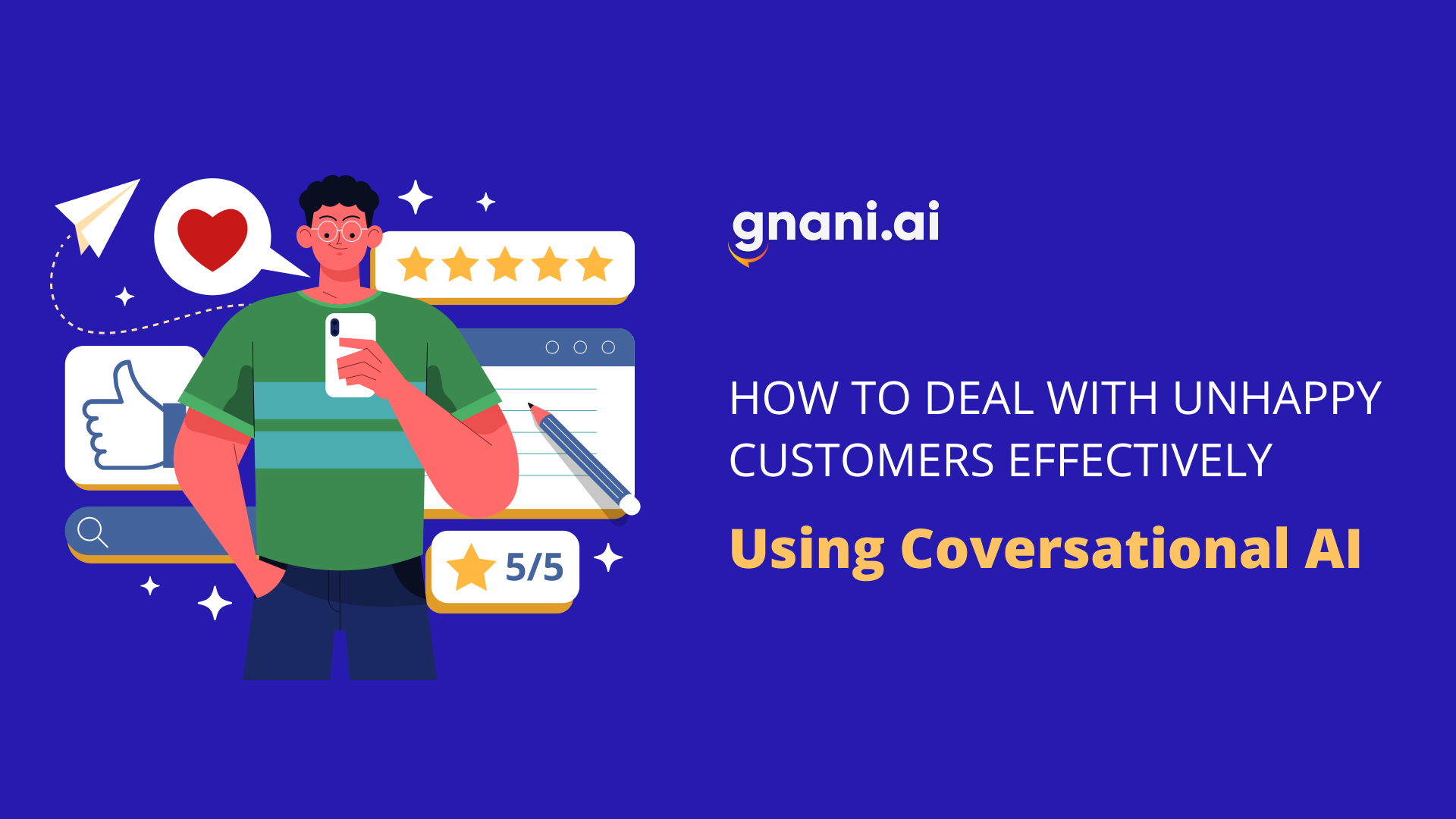Holidays bring a lot of cheer to our lives. Unfortunately, customer service representatives are often busy resolving an influx of eager customer queries during this time. Unhappy customers usually expect quick resolutions and immediate guarantees, which leads to prolonged discussions. Any organization reliant on legacy processes finds that dealing with unhappy customers can be challenging. AI Voice Bots are a handy solution to this challenge.
Organizations can leverage conversational AI in customer service to eliminate long wait times and improve inventory management and process control for better results. AI can nurture fruitful customer experiences and turn a heated debate into a smooth conversation, avoiding bottlenecks and stress.
This post will discuss how conversational AI can help service teams deal with unhappy customers during the holiday season.
Bridging The Customer Service Gap
Customer service is the lifeline of many businesses. It is a platform to connect with the customer, provide access to assistance and guidance, and earn feedback about the brand’s products or services. However, if the service isn’t smooth, there are more escalations than resolutions.
One way to monitor these interactions is through call recordings, which offer in-depth feedback on efficiency. Most customer service teams have a quality assurance wing to ensure seamless customer engagements and continuous improvement.
But this model isn’t ideal for rapidly growing companies that must handle large call volumes and be responsible for goods and services across diverse verticals. Today, customer engagement using conversational AI has become a popular solution to this problem.
Here are a few ways conversational AI can help you manage unhappy customers.
Resourceful call management
Managing high call volumes requires a centralized documentation and data management system to ensure smooth running processes. Most companies already use CRM, customer support desk, and ticket management systems. Conversational AI can be easily integrated into these systems and manage customers straightaway.
Conversational AI bots scale up efficiently whenever the demand increases. When there is a flood of customer support requests during the holidays, these Voice Bots can engage with the customers and answer FAQs, perform basic actions, and transfer calls to agents if the customer needs further assistance.
Team Handling
While dealing with unhappy customers, it’s important to empathize with their feelings and neutralize the situation. For this, your customer reps need a good presence of mind and soft skills. Yet, there is room for error in tense situations, even with trained agents. What if an agent misses some vital information? What if the team doesn’t gel well? What if their process knowledge is limited?
On the other hand, conversational AI bots utilize the data from the CRM and other such sources, engaging with the customer effectively and saving valuable process training time. Since conversational AI bots use deep learning, they can provide consistent support 24/7.
Conversational AI in customer service is urging modernization across industries. Customer engagement with AI is more cost-effective and efficient in furnishing better customer experiences.
Call Recordings
Recordings of customer service interactions while dealing with unhappy customers provide valuable insights into customer experience and call handling efficiency.
Omnichannel analytics tools like aura365™ let you analyze voice recordings. The AI-powered analytics tool keenly observes the call based on the key parameters and gives ratings accordingly. One of the unique features of AI-powered aura365™ is sentiment analysis; it shows the emotional value of the conversation between the customer and the customer support agent.
Companies can use this data and train their agents for peak hour customer support during holiday sales.
The Customer Service Process Evolution
It is vital to understand verbal cues to advance Natural Language Processing and conversational AI in customer service.
While it takes immense training and practical exposure for people to interpret customer behavior and employ techniques to deescalate a situation over a call, customer engagement with AI is driven by an engine programmed to respond accurately and learn from previous experiences.
While dealing with unhappy customers, AI-based voice assistants can transcend traditional learning curves with smart NLU algorithms that instantly assess a call’s tone. With a repository of knowledge, tailoring personalized responses for customer queries is faster and more effective.
Additionally, monitoring keywords is a way to ensure that the customer engagement with AI is seamless while automatically forwarding flagged calls to a human agent. Harvesting overall call data is also more straightforward, and it is easier to track the performance of the customer service process.
The use of conversational AI in customer service is a revolutionary technology that helps deal with unhappy customers promptly. During the peak holiday season, you can ensure that most employees enjoy a day off while the intelligent bot does the talking.
5 Benefits of Conversational AI in Customer Service
Here are five main benefits of conversational AI in customer service and how customer engagement with AI is a fruitful endeavor for customers, agents, and the organization.
1. Better feedback
What if you could skip all the surveys and automate the evaluation of customer experiences?
AI-based software can help automate feedback mechanisms and encourage better CSAT performances.
2. Improved Quality Analysis
Quality checks are vital, and when a team can’t do the job for millions of calls each day, AI will pick up the pace for you. You can improve agent and customer experiences by handling real-time calls, recorded calls, chats, and IVRS with ongoing AI-driven quality checks.
3. Quick Call Resolutions
AI-based voice assistants use predictive insights to study and resolve customer queries. By fetching data from multiple sources and using NLU to decode the customer behavior, conversational AI in customer service can alert managers in the case of an escalation.
4. Omnichannel customer experience
AI technology can gather and analyze data from social media, company collateral, databases, and more, to streamline customer engagement. With a centralized interface for customers to avail support services and other offerings, omnichannel experiences make life much easier.
Due to the centralized system, conversational bots can provide synchronized support. For instance, if the customer has contacted the support team via mail and then called the support center for an update, the AI bot provides relevant information without making the customer provide the details once again.
5. Data mining
While dealing with unhappy customers, the availability of data can make a world of difference. AI-powered analytics tools keenly analyze complaints, customer feedback, and interactions to provide marketable data about your enterprise functions.
Unfortunately, there’s always a lot of negative customer feedback during the holiday season. Conversational AI in customer service is the go-to option if you wish to cruise through the sea of customer queries with an efficient system.





